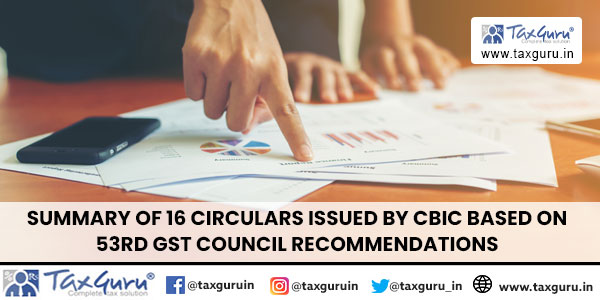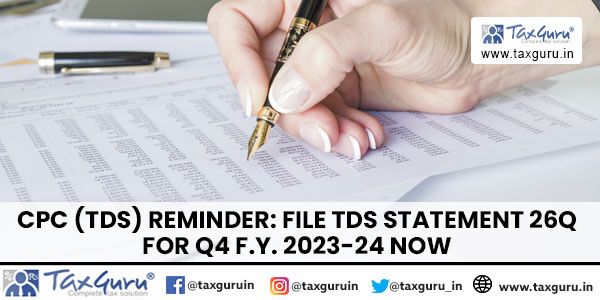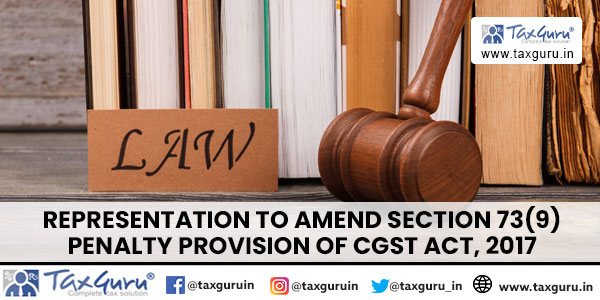The Ministry of Agriculture and Farmers Welfare has issued a notification on June 7, 2024, introducing the Honey Grading and Marking Rules, 2024, in accordance with the Agricultural Produce (Grading and Marking) Act, 1937. These rules specify the types of honey covered, including Blossom Honey, Carvia Callosa Honey, and Honeydew Honey, along with definitions and regulations for grading, marking, packing, and labeling. The rules establish criteria for quality, grade designation, and special conditions for authorized packers. Additionally, they outline parameters for grade designation and quality of honey, covering aspects such as specific gravity, moisture content, total reducing sugars, sucrose content, and more. These regulations aim to ensure the quality, safety, and standardization of honey products for domestic and export trade.
MINISTRY OF AGRICULTURE AND FARMERS WELFARE
(Department of Agriculture and Farmers Welfare)
NOTIFICATION
New Delhi, the 7 June, 2024
G.S.R. 316(E).—Whereas the draft of the Honey Grading and Marking Rules, 2023, was published under section 3 of the Agricultural Produce (Grading and Marking) Act, 1937 (1 of 1937) in the Gazette of India, Extraordinary, Part II, Section 3, Sub-section (i), vide number G.S.R. 876(E), dated the 6th December, 2023, inviting objections and suggestions from all persons likely to be affected thereby within forty-five days from the date on which copies of the said notification published in the Gazette of India, were made available to the public;
And whereas, the copies of the said notification were made available to the public on 06th December, 2023;
And whereas, the objections and suggestions received from the public in respect of the said draft rules have been duly considered;
Now, therefore, in exercise of the powers conferred by sub-section (1) of section 3 of the Agricultural Produce (Grading and Marking) Act, 1937 (1 of 1937), and in supersession of the Honey Grading and Marking Rules, 2008, except as respect things done or omitted to be done before such supersession, the Central Government hereby makes the following rules, namely:-
1. Short title, application and commencement. – (1) These rules may be called the Honey Grading and Marking Rules, 2024.
(2) They shall apply to following types of Honey intended for human consumption, namely:-
(a) Blossom Honey or Nectar Honey;
(b) Carvia Callosa Honey;
(c) Honeydew Honey
(3) They shall come into force on the date of their final publication in the Official Gazette.
2. Definitions.- (1) In these rules, unless the context otherwise requires,-
(a) “Act” means the Agricultural Produce (Grading and Marking) Act, 1937 (1 of 1937);
(b) “Agricultural Marketing Adviser” means the Agricultural Marketing Adviser to the Government of India;
(c) “authorised packer” means a person or a body of persons who has been granted a certificate of authorisation to grade and mark Honey with the grade standards and procedure prescribed under these rules and the General Grading and Marking Rules, 1988;
(d) “certificate of authorisation” means a certificate issued under the provisions of the General Grading and Marking Rules, 1988, authorising a person or a body of persons to grade and mark Honey with the grade designation mark;
(e) “General Grading and Marking Rules” means the General Grading and Marking Rules, 1988 made under section 3 of the Agricultural Produce (Grading and Marking) Act, 1937 (1 of 1937);
(f) “Grade designation mark” means “Agmark insignia” referred to in rule 3;
(g) “Honey” is the natural sweet substance produced by honey bees from the nectar of plants or from secretions of living parts of plants or excretions of plant sucking insects on the living parts of plants, which the bees collect, transform by combining with specific substances of their own, deposit, dehydrate, store and leave in the honey comb to ripen and mature and includes,-
(a) Blossom Honey or Nectar Honey is the Honey which comes from nectars of plants;
(b) Carvia Callosa Honey is the Honey derived from the flowers of the Carviacallosa plant which is described as thixotropic and is gel like extremely viscous when standing still and turns into liquid when agitated or stirred;
(c) Honeydew Honey is the Honey which comes mainly from excretion of plant sucking insects (Hemiptera) on the living parts of plants or secretions of living parts of plants.
(h) “Legal Metrology (Packaged Commodities) Rules” means the Legal Metrology (Packaged Commodities) Rules, 2011, made under the Legal Metrology Act, 2009 (1 of 2010); and
(i) “Schedule” means the Schedules appended to these rules.
(2) The words and expressions used and not defined in these rules but defined in the Agricultural Produce (Grading and Marking) Act, 1937 or the General Grading and Marking Rules, 1988 or the Legal Metrology (Packaged Commodities) Rules, 2011 shall have the meanings respectively assigned to them under the said Act or the rules.
3. Grade designation mark.- The grade designation mark shall consist of “AGMARK Insignia” incorporating the certificate of authorisation number, the word “AGMARK”, the name of commodity and a grade designation resembling the design specified in Schedule-I.
4. Grade designation. – The grade designation to indicate the quality of Honey shall be such as specified in Schedule- II.
5. Quality. – The quality of Honey shall be such as specified in Schedule- II.
6. Method of packing. – (1) The Honey shall be packed in packaging material in accordance with the provisions of the Food Safety and Standards (Packaging) Regulations, 2018 and the Legal Metrology (Packaged Commodities) Rules.
(2) The Honey shall be packed in sizes in accordance with the provisions of the Legal Metrology (Packaged Commodities) Rules or as approved by the Agricultural Marketing Adviser in accordance with rule 11 of the General Grading and Marking Rules.
(3) The containers shall not be composed wholly or partly of any poisonous or deleterious substances which renders the contents injurious to health.
(4) The containers shall be free from insect infestation, fungus contamination and should not impart any obnoxious and undesirable odour or flavour to the product.
(5) The screwed caps shall be made of non-corrosive and non-reactive material to the product.
(6) The graded material of small pack sizes of the same lot or batch and grade may be packed in a master container with complete details thereon along with grade designation mark.
(7) Each package shall contain Honey of the same type and of the same grade designation.
(8) Each package shall be properly and securely closed and sealed so as to disallow spilling.
7. Method of marking and labeling.- (1) The grade designation mark shall be securely affixed to or clearly and indelibly printed on each package or container in the manner approved by the Agricultural Marketing Adviser or an officer authorised by him in this behalf in accordance with rule 11 of the General Grading and Marking Rules.
(2) The Honey shall be marked on packaging in accordance with the provisions of the Food Safety and Standards (Labeling and Display) Regulations, 2020.
(3) In addition to the grade designation mark, the following particulars shall be clearly and indelibly marked on each package or container, namely:-
(a) name of the commodity;
(b) C. A. number;
(c) grade;
(d) variety or trade name (optional);
(e) lot or batch number;
(f) date of manufacture or packaging;
(g) nutritional information;
(h) net quantity;
(i) name and address of the authorised packer (printed and/or scannable);
(j) maximum retail price (inclusive of all taxes);
(k) expiry or use by date;
(l) storage condition, if any; and
(m) any other particulars as may be specified under the Legal Metrology (Packaged Commodities) Rules or under the Food Safety and Standards (Packaging) Regulations, 2018 and the Food Safety and Standards (Labeling and Display) Regulations, 2020 or any notification issued under any law for the time being in force or any instructions issued there under.
(4) The ink used for marking on packages shall be of such quality which shall not contaminate the Honey.
(5) As per the labeling provisions made under the Food Safety and Standards (Packaging) Regulations, 2018 and the Food Safety and Standards (Labeling and Display) Regulations, 2020, honey shall be labeled as:-
(a) Honeydew Honey – if the product complies with the definitions given in clause (g) of rule 2;
(b) Blend of Honeydew Honey and Blossom Honey – if the product is a mixture of Blossom or Nectar Honey and Honeydew Honey;
(c) Carvia Callosa Honey – if the product complies with the definitions given in clause (g) of rule 2;
(d) if the Honey is obtained by pressing broodless combs, honey shall be labeled as “Pressed Honey”. If honey belongs to any of the categories mentioned in sub-rule (4) above and also falling into the category of Pressed Honey, it shall be labeled as “Pressed Honeydew Honey” or “Pressed and Blend of Honeydew Honey and Blossom Honey” or “Pressed Carvia Callosa Honey”;
(e) The Honey may be designated according to floral or plant source, if it comes wholly or mainly from any particular source and has the organoleptic, physicochemical and microscopic properties corresponding with that origin and categorized as under;-
Explanation. – for the purpose of this rule,-
(i) Monofloral Honey – if the minimum pollen content of the plant species concerned is not less than forty-five percent of total pollen content;
(ii) Multi Floral Honey – if the pollen content of any of the plant species does not exceed forty-five percent of the total pollen content.
(6) The authorised packer may, after obtaining prior approval of the Agricultural Marketing Adviser or an officer authorised by him in this behalf, mark his private trade mark or trade brand on the graded packages provided the same do not indicate quality other than that indicated by the grade designation mark affixed to the graded packages in accordance with these rules.
8. Special conditions for grant of certificate of authorisation. – In addition to the conditions specified in sub-rule (8) of rule 3 of the General Grading and Marking Rules, every authorised packer shall comply with the conditions specified under these rules, namely:-
(i) the authorised packer shall either set up his own laboratory as per norms provided under rule 8 of the General Grading and Marking Rules or have access to an approved State Grading Laboratory or cooperative or association laboratory or a private commercial laboratory manned by a qualified chemist approved by the Agricultural Marketing Adviser or an officer authorised by him in this behalf under rule 9 of the General Grading and Marking Rules for testing the quality of Honey;
(ii) the premises of authorised packer shall be maintained in hygienic and sanitary condition with proper ventilation and well lighted arrangement and the personnel engaged in these operations shall be in sound health and free from any infectious, contagious or communicable diseases;
(iii) the premises of the authorised packer shall have adequate storage facilities with pucca floor and free from dampness, any kind of cracks and crevices, rodent and insect infestation;
(iv) the authorised packer and the approved chemist shall observe all instructions regarding testing, grading, packing, marking, sealing and maintenance of records which may be issued by the Agricultural Marketing Adviser or an officer authorised by him in this behalf in accordance with the General Grading and Marking Rules from time to time;
(v) the surrounding area or environment shall be free from objectionable odour, smoke, dust or air borne pathological contaminations; and
(vi) all equipments and utensils shall be made of food grade stainless steel only.

Note: C.A. number may be printed either
(a) inside the Agmark insignia; or
(b) C. A. No. with words “see label” (replacing number place), then CA No. to be either preprinted or inkjet printed at prominent place on label.
SCHEDULE-II
(See rules 4 and 5)
Grade designation and quality of honey
1. “Honey” is the natural sweet substance produced by honey bees from the nectar of plants or from secretions of living parts of plants or excretions of plant sucking insects on the living parts of plants, which the bees collect, transform by combining with specific substances of their own, deposit, dehydrate, store and leave in the honey comb to ripen and mature.
2. Minimum requirements:
(i) Honey shall be-
(a) well ripened, natural product produced by honeybees;
(b) having sweet flavour, pleasant aroma and taste characteristic to variety;
(c) possess uniform colour, varying from light golden to dark brown depending upon the source;
(d) free from visible mould, inorganic or organic matters such as insects, insect debris, brood or grains of sand dirt, pieces of beeswax, the fragments of bees and other insects and from any other extraneous matter;
(e) free from any added food additives such as colour, vitamins, minerals, saccharin and suspended particles;
(f) free from toxic substances arising from the micro-organisms or plants which may constitute a hazard to health;
(g) free from any objectionable flavour, aroma or taint absorbed from foreign matter during its processing and storage;
(ii) honey shall not have begun to ferment or effervesce;
(iii) filtration is permitted to remove objectionable matter provided sufficient pollen grains which characterized the honey are retained;
(iv) honey may be strained clear through a double thickness of muslin cloth or mesh or filter of suitable fineness at a temperature below 65°C to remove all type of extraneous matter;
(v) honey shall not be heated to such an extent that its essential composition is changed or its quality is impaired;
(vi) for domestic trade, it shall comply with the restrictions in regard to residual levels of metal contaminants, antibiotic residues, pesticide residues, microbial requirements, naturally occurring toxic substances and other food safety requirements as specified under the regulations made under the Food Safety and Standards Act, 2006 (34 of 2006);
(vii) for export trade, it shall comply with the residual limits of heavy metals, antibiotic residues, pesticides and other food safety requirements as laid down by the Codex Alimentarius Commission or importing countries requirement for export.
3. Criteria for grade designation:
TABLE
| Sl. No. | Parameters | Grade designation | ||
| Special | Standard | General | ||
| 1 | Specific gravity at 27 °C, (Minimum) | 1.40 | 1.37 | 1.35 |
| 2 | Moisture, percentage by mass, (Maximum) | 20.0 | 20.0 | 20.0 |
| 3 | Total reducing sugars, percentage by mass, (Minimum) |
|||
| For the Honey not listed below | 70.0 | 65.0 | 65.0 | |
| Carvia- callosa and Honeydew honey | 60.0 | 60.0 | 60.0 | |
| Blends of Honeydew honey with blossom honey | 45.0 | 45.0 | 45.0 | |
| 4 | Sucrose, percentage by mass, (Maximum) | |||
| For the Honey not listed below | 5.0 | 5.0 | 5.0 | |
| Carvia-callosa & Honeydew honey | 10.0 | 10.0 | 10.0 | |
| 5 | Fructose and Glucose ratio (F/G Ratio) | 1.00-1.50 | 0.95-1.50 | 0.95-1.50 |
| 6 | Total Ash, percentage by mass, (Maximum) |
0.50 | 0.50 | 0.50 |
| 7 | Acidity expressed as formic acid, percentage by mass, (Maximum) | 0.20 | 0.20 | 0.20 |
| Free Acidity Milli equivalents acid/1000g, (Maximum) | 50 | 50 | 50 | |
| 8 | Hydroxy Methyl Furfural (H.M.F.) mg/kg (Maximum) | 80 | 80 | 80 |
| 9 | Diastase activity in schade units per gram, (Minimum) | 3.0 | 3.0 | 3.0 |
| 10 | Water insoluble matters percentage (Maximum) | |||
| c) For the Honey not listed below | 0.10 | 0.10 | 0.10 | |
| a) For Pressed honey | 0.50 | 0.50 | 0.50 | |
| 11 | C4 Sugar, per cent by mass, Max. | 7.0 | 7.0 | 7.0 |
| 12 | Total count of pollen and plant elements/g | |||
| Apiary Honey (Maximum) | 15,000 | 25,000 | 50,000 | |
| Squeezed Honey (Minimum) | 5,000 | 5,000 | 5,000 | |
| 13 | 2-Acetylfuran-3-Glucopyranoside (2-AFGP) as Marker for Rice Syrup | Absent3 | Absent3 | Absent3 |
| 14 | Foreign oligosaccharides (Max. Percent Peak Area) | 0.7 | 0.7 | 0.7 |
| 15 | Proline, mg/kg, Minimum | 180.0 | 180.0 | 180.0 |
| 16 | Electrical Conductivity | |||
| Honeys not listed under Honeydew, Max. | 0.8 mS/cm | 0.8 mS/cm | 0.8 mS/cm | |
| Honeys listed under Honeydew, Min. | 0.8 mS/cm | 0.8 mS/cm | 0.8 mS/cm | |
| 17 | (a) Δδ13C Max2. (Maximum difference between all measured δ13C values); per mil (%o) | ± 2.1 | ± 2.1 | ± 2.1 |
| (b) Δδ13CFru – Glu (The difference in 13C/12C ratio between fructose and glucose); per mil(%o) | ± 1.0 | ± 1.0 | ± 1.0 | |
| (c) Δδ13C Protein – Honey (The difference in 13C/12C between honey and its associated protein extract); per mil(%o) | 2 – 1.0 | 2 – 1.0 | 2 – 1.0 | |
| 18 | Optical Density at 660 nm (Maximum) | 0.30 | 0.30 | 0.30 |
| 19 | Fiehe’s Test | Negative | Negative | Negative |
| 20 | Aniline Chloride Test | Negative | Negative | Negative |
**
Note:
1. If Fiehe’s test is positive, but Hydroxy Methyl Furfural (H.M.F.) content is below 80 p.p.m. then honey may be accepted.
2. Δδ13C Max. is the maximum difference observed between all possible isotopic ratios measured (Δδ13C fructose-disaccharides/ Δδ13C fructose-trisaccharide’s/ Δδ13C fructose -protein/Δδ13C glucose-disaccharides /Δδ13C glucose-trisaccharide’s/Δδ13C glucose-protein/Δδ13C disaccharides-trisaccharide’s/ Δδ13C disaccharides-protein /Δδ13C trisaccharide’s-protein).
3. Minimum Required Performance Level- 1mg/kg
4. Other requirements:
(i) Honey shall be homogeneous. It may be warmed before use, if granulated;
(ii) Honey shall be stored in cool and dry place maintained in hygienic condition.
Explanation for the purpose of the Table,-
(a) “Apiary honey” is honey produced from domesticated beehives.
(b) “Blossom honey” or “Nectar honey” is honey which comes from nectar of plants.
(c) “Carvia Callosa honey” is honey derived from flowers of the Carviacallosa plant which is described as thixotropic and is gel like extremely viscous when standing still and turned into liquid when agitated or stirred.
(d) “Extracted honey” is honey obtained by centrifuging decapped brood less combs; or without the application of moderate heat.
(e) “Honeydew honey” is honey which comes mainly from excretions of plant sucking insects (Hemiptera) on the living parts of plants or secretions of living parts of plants.
(f) “Squeezed honey” or “Pressed Honey” is honey obtained by pressing or squeezing of brood less combs.
(F. No. Q-11047/05/Honey/2021-Std)
FAIZ AHMED KIDWAI, Addl. Secy. (Marketing)


























